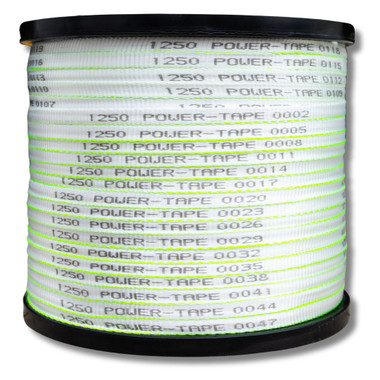Selecting Pet-Safe Ropes: What Materials Are Best for Your Furry Friends?
Estimated 0 min read
When it comes to taking care of our pets, we all want the best. From the food they eat to the toys they play with, every decision counts. But one thing that often gets overlooked? The ropes we give them to tug, chew, and play with. Choosing the right rope for your furry friends isn’t just about keeping them entertained—it’s about keeping them safe.
Let’s cut to the chase: not all ropes are created equal. Some are great for pets, while others can pose serious hazards. If you’ve ever wondered, “What rope materials are safe for my pets?” or “How do I choose the best rope for my dog’s tug-of-war obsession?”—you’re in the right place. In this blog, we’ll break it all down for you.
Why the Right Rope Matters
Rope toys are a favorite for many pets, especially dogs, birds, and cats. They’re versatile, durable, and provide endless fun for activities like fetch, tug-of-war, sharpening claws, hanging and climbing or just chewing to relieve boredom. However, a poorly chosen rope can lead to problems like:
- Ingestion of fibers: Some ropes fray easily, and if your pet swallows those fibers, it could cause blockages or digestive issues.
- Toxic materials: Cheap ropes might be treated with chemicals or dyes that can be harmful if chewed or licked.
- Durability concerns: A rope that breaks too easily can turn into a choking hazard or leave sharp edges.
Your pet deserves better. So, let’s talk about the best options out there.
Pet-Safe Rope Materials: The Good, The Bad, and The Ugly
When selecting ropes for pets, focus on materials that are natural, durable, and free of harmful chemicals. Here’s a breakdown of common rope materials and how they stack up for pet safety:
1. Solid Braid Cotton Rope For Smaller Dogs And Birds
- Why it’s great: This solid braid cotton is wonderfully soft, natural, and gentle on your pet’s teeth and gums. It’s also easy to clean—just toss it in the washing machine when it gets grimy.
- Best for: Smaller dogs that like to chew and tug without shredding their toys too quickly.
- Watch out for: Cheap cotton ropes may fray more easily, so make sure you’re buying a quality cotton rope like ours.
- What Size Rope For Dogs: A small or medium sized dog will do well with a ½” or ¾” diameter rope.
Click to shop Solid Braid Cotton Rope!
- Why it’s great: Sisal rope is a great natural fiber rope that is best for DIY cat scratching posts. It’s tough and durable, and will last a long time.
- Best for: Cats love sisal for scratching.
- Watch out for: Although some people use sisal for dog and bird toys, sisal ropes have a better chance of shedding fibers. Because of the slight risk associated with swallowing rope fibers, we do not recommend sisal rope for chew toys.
3. Twisted Cotton Rope For Larger Dogs
- Why it’s great: Just like the Solid Braid Cotton Rope, this is soft and gentle for your dog’s teeth and gums. The twisted variety of our cotton rope comes in larger sizes, better for a large dog.
- Best for: Big active dogs that love tugging and playing fetch.
- What Size Rope For Dogs: A big dog will do better with a cotton rope bigger than an inch in diameter, up to 1 ½” in size.
Click to shop Twisted Cotton Rope!
Materials to Avoid For DIY Pet Toys
Not all ropes are pet-friendly. Here are a few materials you should avoid at all costs:
- Manila ropes treated with chemicals: Some manila ropes are treated with oil to prevent decay. These can be toxic if chewed.
- Cheap, dyed ropes: Brightly colored ropes might look fun, but cheap dyes can contain harmful chemicals.
- Frayed or old ropes: Once a rope starts to fall apart, it’s time to replace it. Loose fibers and sharp edges can harm your pet.
- Cotton Rope Blends: Some cotton ropes are blended with polypropylene, acrylics, or polyester. These ropes may be stronger and cheaper than 100% pure cotton, but they aren’t safe for pets due to the chemical composition.
DIY Rope Toys For Dogs: Step-By-Step
Feeling crafty? Making your own rope toys can be a fun and cost-effective way to keep your pet happy. Here’s a quick tutorial:
Materials You’ll Need:
- We recommend buying 10 feet of Cotton Rope—it costs about the same as a store bought dog toy but will make about 3 or 4 toys
- For Smaller Dogs—2 Feet of ½” rope per toy
- For Medium Dogs—2.5 Feet of ¾” rope per toy
- For Larger Dogs—3 Feet of 1” rope per toy
- For Very Large Dogs—4 Feet of 1 ½” rope per toy
- Scissors
- Optional: Non-toxic fabric dye or natural vegetable dyes for a splash of color
Step-by-Step Instructions:
- Prepare the Rope:
- Cut a length of rope appropriate for your dog's size and the desired toy length.
- Unravel approximately 8 to 9 inches of the rope into its three individual strands.
- Tape the ends of each strand to prevent fraying during the knotting process.
- Tie the First Matthew Walker Knot:
- First Strand: Take the first strand, wrap it around the main rope, and pass its end up through the loop created.
- Second Strand: Wrap the second strand around the main rope, ensuring it passes through both its own loop and the loop of the first strand.
- Third Strand: Repeat the process with the third strand, passing it through the loops of the first and second strands.
- This sequence creates a series of interlocking overhand knots, forming the Matthew Walker knot.
- For a video of the Matthew Walker knot, click here.
- Tighten the Knot:
- Evenly tighten the knot by gently pulling each strand. Start with the last strand added and work backward to the first.
- Gradually adjust each strand to ensure the knot is symmetrical and secure.
- Finish the Ends:
- Trim the excess length of each strand to your preference.
- Use a comb or brush to fray the ends, giving the toy a finished appearance.
- Repeat on the Other End:
- Determine the desired length of the toy and cut the rope accordingly, allowing an extra 8 to 9 inches for knotting.
- Unravel the strands at the new end and repeat the knotting process to create a second Matthew Walker knot.
- Final Touches:
- Ensure both knots are tight and secure.
- Fray the ends on both sides for a consistent look.
By following these steps, you'll create a sturdy and safe rope toy that your dog can enjoy. Always supervise your pet during playtime to ensure the toy remains intact and safe.
DIY Cat Scratching Tower: A Step-by-Step Guide with Sisal Rope
Cats love to scratch—it’s in their nature. Scratching helps them stretch, mark their territory, and keep their claws healthy. Instead of sacrificing your furniture, why not build your own cat scratching tower? It’s simple, cost-effective, and can be customized to fit your space and your cat’s preferences.
Here’s how you can create a sturdy scratching tower using sisal rope.
Materials You’ll Need:
- Sisal Rope: You’ll need about 100 feet of ⅜” Sisal, depending on the size of your tower.
- Wooden Post: A sturdy piece of untreated wood, 4x4 or similar, around 3-4 feet tall.
- Baseboard: A flat, heavy piece of wood or MDF for stability (approximately 18x18 inches or larger, depending on your post height).
- Top Platform (Optional): A flat piece of wood or MDF, if you’d like a perch for your cat.
- Carpet or Fabric (Optional): To cover the base or top platform for added comfort.
- Wood Screws: To secure the post to the base and platform.
- Drill and Screwdriver: For assembly.
- Staple Gun: To attach the sisal rope.
- Non-Toxic Wood Glue (Optional): For extra stability when attaching the rope.
- Sandpaper: To smooth rough edges on the wood.
Step-by-Step Instructions:
1. Prepare the Base and Post
- Sand all wooden pieces to remove splinters and rough edges.
- Attach the wooden post to the center of the baseboard using wood screws. Drill pilot holes first to prevent splitting, then secure the post tightly. Ensure the base is stable and doesn’t wobble.
2. Wrap the Post with Sisal Rope
- Start at the bottom of the post. Use a staple gun to secure the end of the sisal rope to the base of the post. If you want extra hold, apply a line of non-toxic wood glue along the bottom of the post before starting.
- Tightly wrap the sisal rope around the post, ensuring there are no gaps between the coils. Pull the rope taut with each wrap to keep it secure.
- Every few inches, apply a staple to keep the rope from shifting. Alternatively, you can use small dabs of wood glue every few wraps for added stability.
- Continue wrapping until you reach the top of the post. Secure the end of the rope with a staple or glue.
3. Add the Top Platform (Optional)
- If you want to add a perch, attach the top platform to the top of the post using screws. Drill pilot holes to prevent cracking, then screw the platform securely in place.
- Cover the platform with carpet or fabric using a staple gun to make it more comfortable for your cat.
4. Finish the Base
- To prevent sliding, you can cover the base with carpet or a non-slip fabric. Cut the material to fit, then attach it with a staple gun or glue.
5. Check for Safety
- Inspect the entire scratching tower for any loose screws, staples, or splinters.
- Tug on the sisal rope to ensure it’s securely attached. Stability is key—if the tower wobbles, add weight to the base or use a wider baseboard.
Keeping Ropes Safe for Play
No matter how sturdy a rope is, regular maintenance is key. Here’s how to keep your pet’s rope toys safe and in good condition:
- Inspect regularly: Check for fraying, loose fibers, or weak spots. Replace the rope if it starts to fall apart.
- Wash often: Ropes can get pretty gross, especially after outdoor play. A quick wash keeps them clean and free of bacteria.
- Store properly: Keep ropes in a dry, safe place to prevent mold or mildew.
Final Thoughts
Choosing the right rope for your pet doesn’t have to be complicated. Stick to natural, high-quality materials like cotton and sisal and avoid anything treated with chemicals or prone to fraying. Whether you’re buying pre-made toys or crafting your own, a little attention to detail can make all the difference for your furry friend’s safety and happiness.
At the end of the day, the right rope is more than just a toy—it’s a tool for bonding, exercise, and fun. So go ahead, pick up a pet-safe rope, and let the games begin! Your four-legged companion will thank you.








